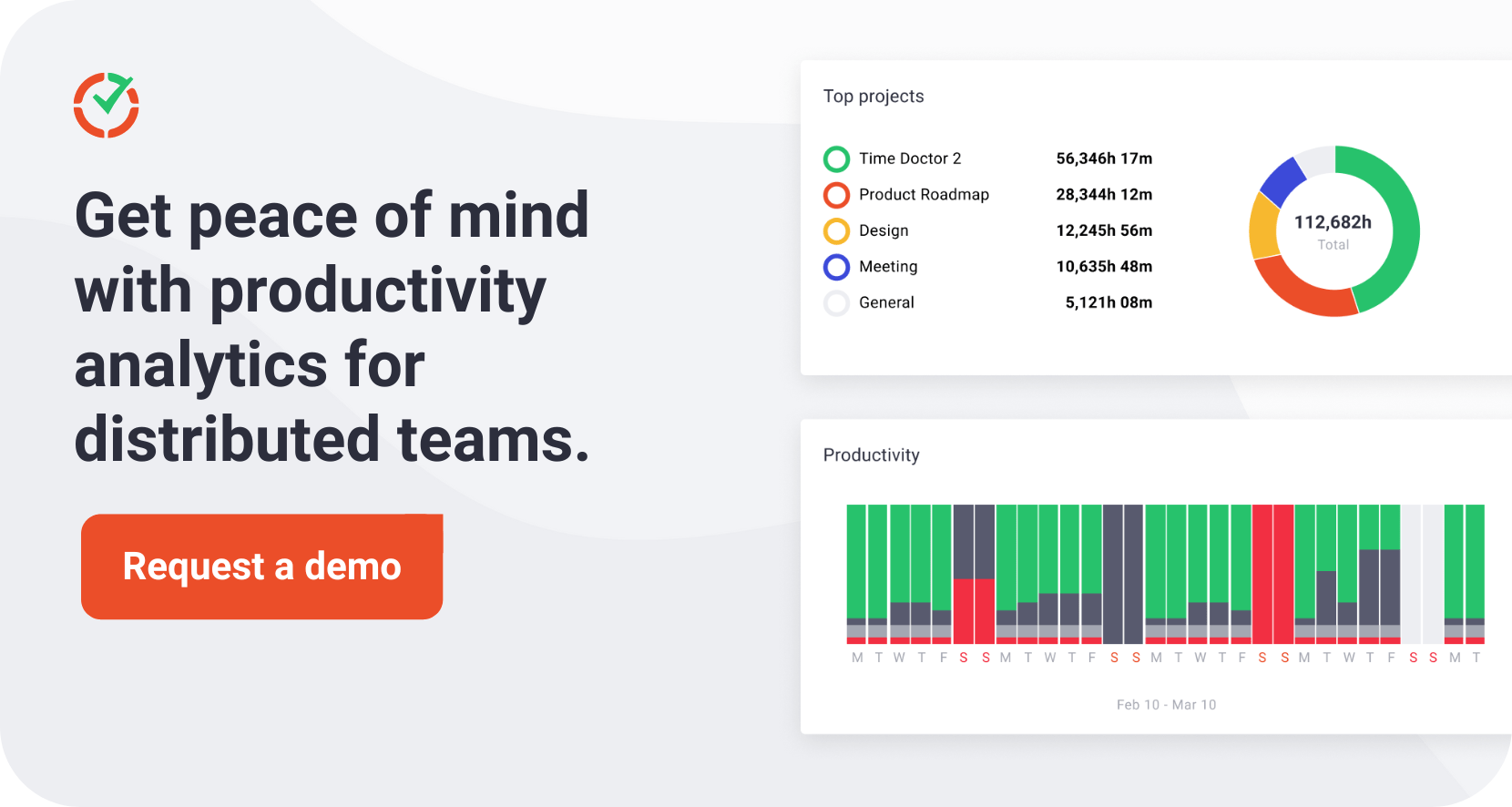A company’s success and competitive edge depend on staff efficiency in the modern business world. Technology transforms firms as they maximize operations, production, and efficiency.
Companies are rethinking their operations and creating new productivity standards by incorporating sophisticated technologies like artificial intelligence, cloud computing, collaboration tools, and automation.
Technology in the workplace improves productivity, communication, and job management, creating a more dynamic, efficient, and resilient company model.
Table of Contents
Current technological innovations
Technological breakthroughs have transformed company operations, improving task management, data management, and cooperation.
- AI: AI automates complicated processes, improves decision-making using predictive analytics, and personalizes consumer experiences, increasing productivity.
- Machine Learning (ML): ML algorithms learn from data patterns to optimize operations, decrease mistakes, and predict future trends, enhancing efficiency.
- Cloud computing: Scalable resources enable global remote work, data storage, and collaboration, boosting corporate efficiency.
- Robotic Process Automation (RPA)RPA automates monotonous activities, freeing up human resources for strategic work and increasing productivity.
- Internet of Things (IoT): Connecting devices and systems allows real-time data gathering and analysis, asset utilization, and operational process optimization.
- Blockchain technology: Secures and transparently records transactions, facilitating supply chain management and contracts and increasing productivity.
- Data analytics:Data analytics helps firms make educated decisions by analyzing massive information, recognizing patterns, and optimizing strategies for performance and productivity.
- Collaboration platforms: Slack, Microsoft Teams, and Zoom enable teamwork and productivity across locations.
- Project monitoring and management software: Asana, Trello, and Jira help teams stay organized and productive.
- Security measures: Advanced cybersecurity solutions secure critical data and systems, preserving company continuity and decreasing downtime, indirectly boosting productivity.
These technologies are changing activities and processes and redefining what is feasible for digital-age enterprises.
Today’s businesses need the proper technology to maximize productivity. Here’s a complete list of the best productivity-boosting gadgets across categories:
1. Project-management software
- Asana: Simple dashboards and reporting for task management and progress monitoring.
For visual project management, Trello organizes tasks and projects with cards.
- Monday.com: Customizable project and workflow management tool for businesses.
2. Communications platforms
- Slack: A structured messaging platform that enables teams to share files and communicate quickly.
- Microsoft Teams: Works with Microsoft 365 for team communication and collaboration.
- Zoom: Is dependable video conferencing for remote teams and client meetings.
3. Time-management tools
- Time Doctor: Tracks time spent on tasks, providing insights into productivity and helping manage remote teams.
- Toggl: Simple time tracking with strong reports for freelancers and teams.
4. File and document sharing
- Google Drive: Cloud storage for sharing and collaborating on documents, spreadsheets, and presentations.
- Dropbox: Dropbox allows file sharing and storage with strong security for organizations of all sizes.
5. Customer Relationship Management (CRM)
- Salesforce: A 360-degree customer perspective CRM for major organizations.
- HubSpot: A simple CRM platform for small to medium-sized enterprises that integrates marketing, sales, and service data.
Tips for selecting the right tools
- Assess your needs: Identify the issues or procedures you want to change. It will help you choose tools.
- Think about team size: Smaller teams may need simpler, more intuitive technologies, while bigger enterprises may need more complete solutions.
- Integration: Choose products that work smoothly with your software ecosystem to minimize disturbance and enhance productivity.
- Scalability: Choose technologies that can add users and meet changing company demands without major overhauls.
- User-friendly design: Choose technologies with simple interfaces to reduce learning curves and speed team adoption.
- Security features: If you handle sensitive data, be sure the tools meet industry standards.
- Cost-effectiveness: Consider the original investment and productivity improvements ROI.
By carefully evaluating these aspects, organizations may choose the correct tools and apps to match their objectives, improving workplace productivity.
Implementation strategies for technology solutions
Strategic planning and understanding of problems are needed to successfully implement new technologies in the workplace. Key strategies for the process are:
1. Plan implementation clearly
- Define objectives: State your new technological goals.
- Determine goals: Break implementation into reasonable chunks with deadlines.
2. Engage stakeholders early
- Communicate benefits:Communicate advantages early to ensure stakeholders grasp the new technology’s value and benefits.
- Gather input:Users should help choose the solution to ensure it fulfills their demands.
3. Give complete training
- Customize training: Tailor sessions to user skill levels.
- Offer resources: Provide learning resources including manuals, tutorials, and FAQs.
4. Establish technical support Support Systems
- Setup support systems:Create a technical support framework for users.
- Feedback loop: Allow users to report concerns and offer changes.
5. Track and adapt
- Track progress: Evaluate implementation progress and identify areas for improvement using metrics.
- Be flexible: Adjust based on input and performance data.
6. Prioritize security and compliance
- Data protection: Make sure the technology follows data protection laws.
- Secure integration: Protect data during integration.
Challenges and solutions for technology adoption
1. Challenge: Change resistance
- Solution: Encourage innovation and improvement. Promote the new technology’s personal and organizational benefits.
2. Challenge: To address the training gap, invest in comprehensive programs, and provide accessible learning tools for all users.
Integration with existing systems
- Solution: Choose smooth integration technologies or middleware.
3. Challenge: Cost Limits
- Solution: Assess ROI using a detailed cost-benefit analysis. Find scalable solutions that let you start small and grow.
4. Challenge: Technical issues and downtime
- Solution: Choose reliable providers with great customer service. Take precautions to reduce disturbance.
Strategic planning and proactive management may help organizations implement technology and create a more efficient, productive, and engaged staff.
Measuring the impact of technology on workforce productivity
To assess technology’s efficacy and guide future investments, productivity must be assessed. Techniques and measurements to measure how technology improves labor productivity, including examples.
Technology Impact Evaluation Methods
- Surveys, feedback: Get qualitative feedback from employees on how the technology affects their job productivity and happiness.
- Performance metrics analysis: Pre- and post-implementation performance data can assess productivity.
- A cost-benefit analysis:Compare the technology’s expenses against its advantages, such as time saved, production raised, or job quality enhanced.
- Time tracking: Compare work completion times before and after technology adoption to see time savings.
Key metrics for assessing productivity
- Task completion rate: Speed of work completion pre- and post-technology adoption.
- Work quality: Measurements of quality, customer satisfaction, and mistake rates.
- Employee engagement: Changes in employee engagement and satisfaction might affect productivity.
- Utilization rates: How often and well the company uses new technologies.
- Income per worker: Increases in this statistic imply increased production.
Real-world data and statistics
- AI and automation : A McKinsey Global Institute analysis indicates that AI and automation can boost global productivity by 0.8% to 1.4% yearly.
- Cloud computing: The International Data Corporation (IDC) found that cloud computing reduced IT costs by 40% and increased productivity.
- Tech for remote work: Remote work assisted by digital collaboration technologies helped sustain and increase production throughout the COVID-19 epidemic. According to a Boston Consulting Group report, 75% of remote workers maintained or improved their productivity.
Conclusion
Technological solutions that simplify procedures, boost collaboration, and optimise operational efficiency have become essential for workplace productivity. Businesses may reinvent their operations and achieve unprecedented efficiency by using AI, cloud computing, and productivity-enhancing project management and communication apps. Implementing these technologies with strategic planning and ongoing review may break down barriers and create a more dynamic and efficient workplace. Technology is projected to play a larger role in increasing labor productivity in the future, with constant developments promising to unleash new potentials for organizations seeking to compete in the ever-changing digital world.

Carlo Borja is the Content Marketing Manager of Time Doctor, a workforce analytics software for distributed teams. He is a remote work advocate, a father and a coffee junkie.



